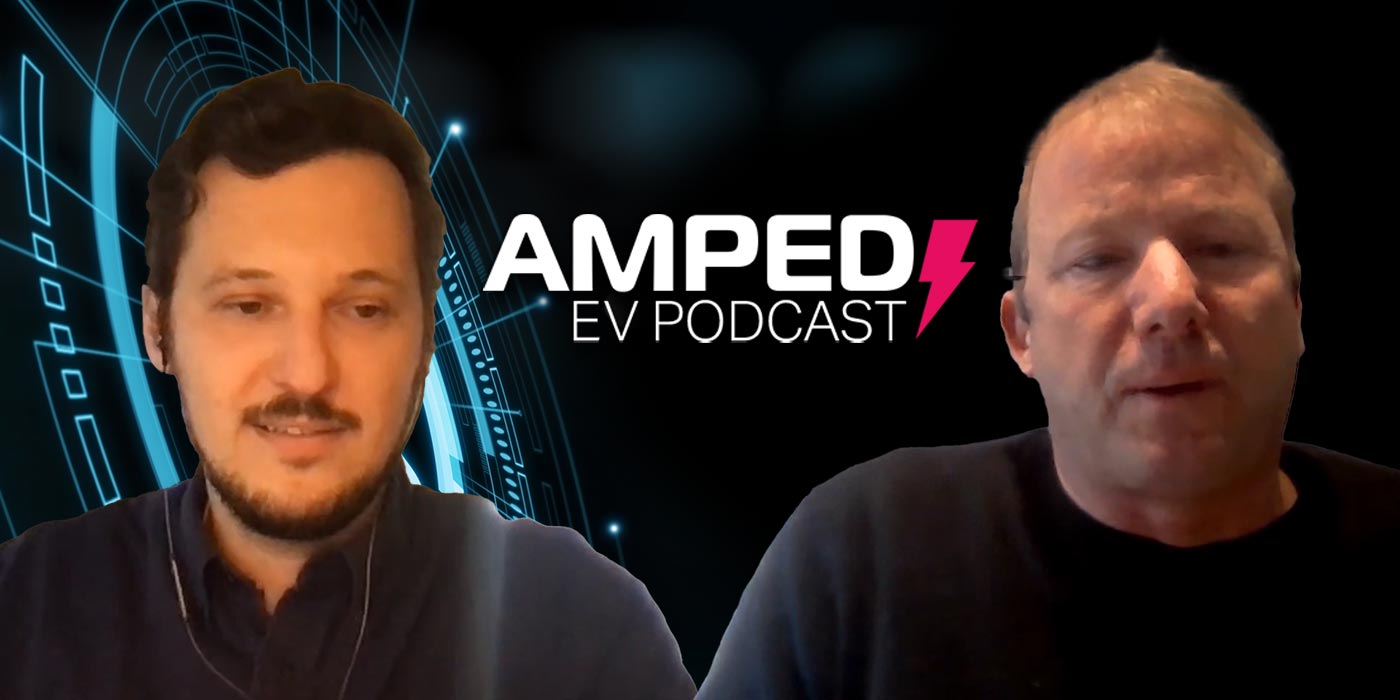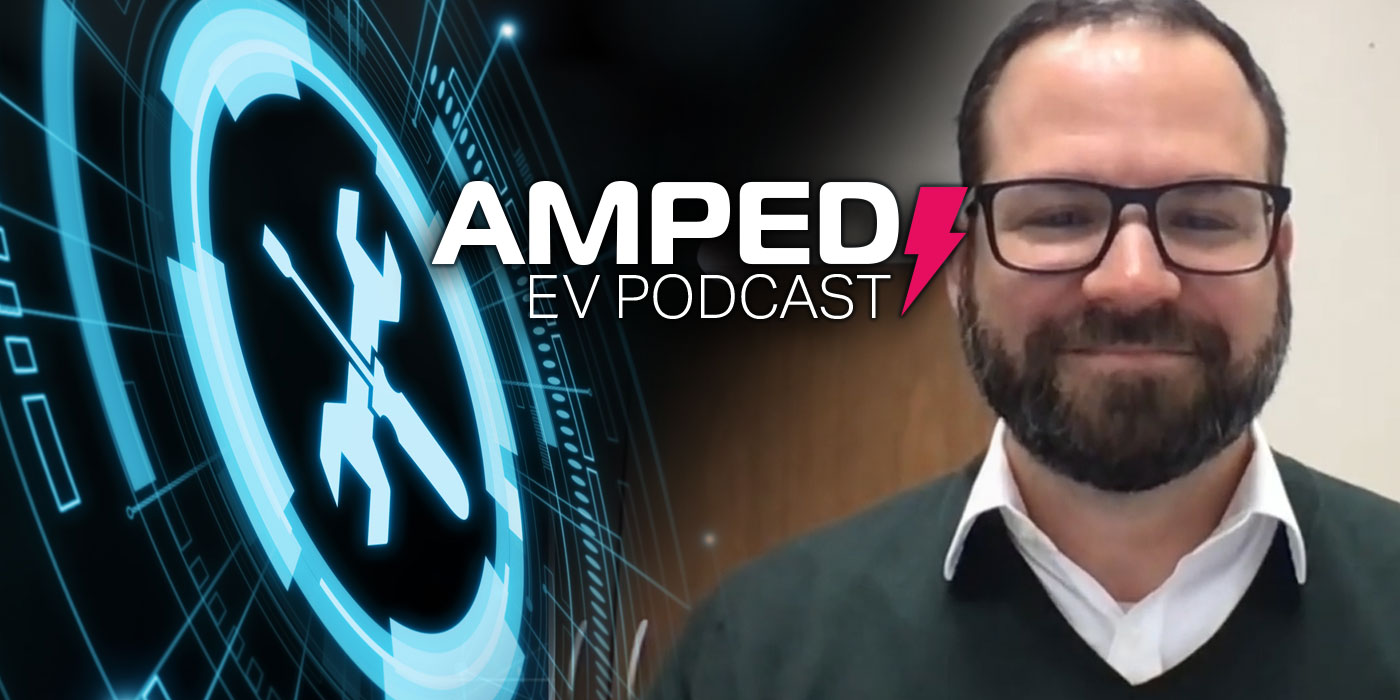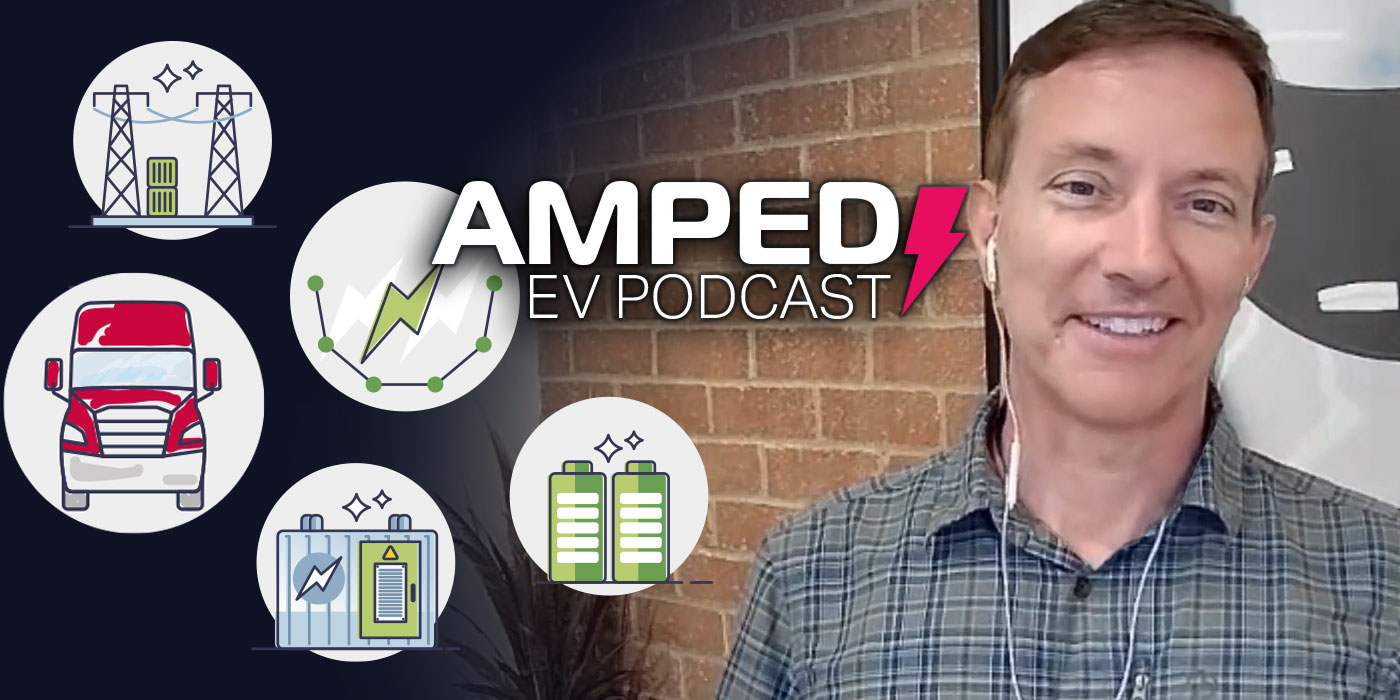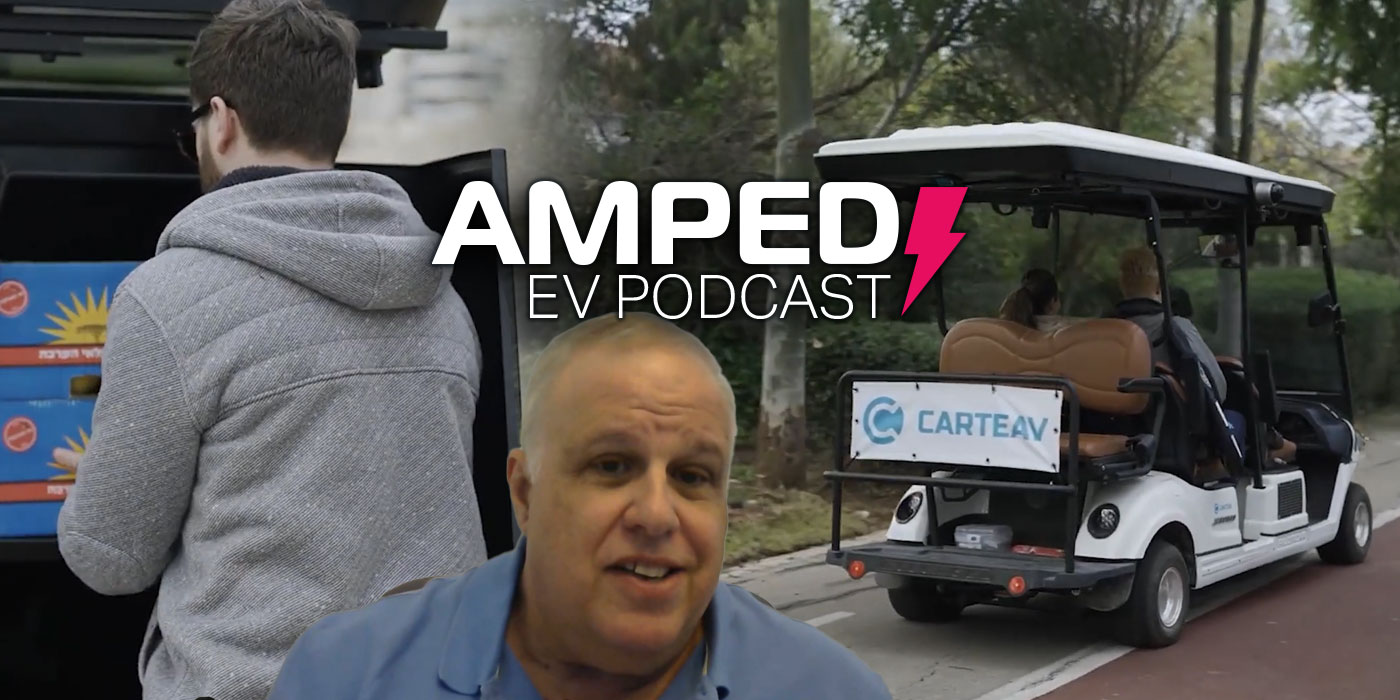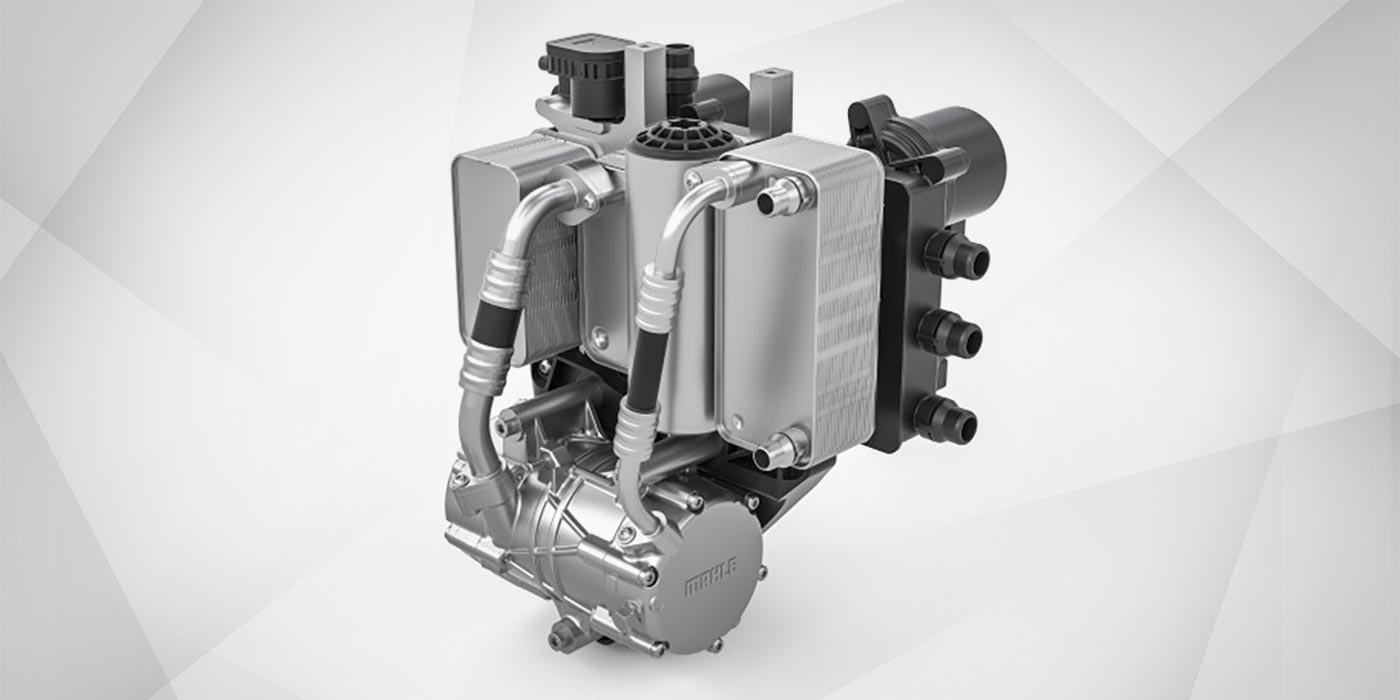If we’re talking about electric vehicles, I’ll give it about five minutes before we hit the ol’ “range” topic. Typically, the conversation swings into range anxiety territory, and this makes talking about easy ways to extend the driver’s range so much fun. Instead of focusing on “range anxiety,” we can shift our focus to “range serenity.”
To this end, many drivers may be surprised at the effect their choice of tires has on their maximum expected range. The good news is that tire manufacturers have been focusing on low-rolling-resistance tires – which naturally enhance a vehicle’s range – for decades now.
“I did a study and I compared roughly 50 tires on the same vehicle, a very popular electric vehicle. We saw a difference in range from the best tire to the worst tire of about 14%,” says Russell Shepherd, technical communications director at Michelin. “Typically, in particular with Michelin, the best range you’re going to get is the tire that was originally on the vehicle. But, going from there, there are offers outside of the OE fitment that can provide different balances of performances, differences in terms of longevity, differences in terms of maybe you’ve got a summer fitment and you want to go to an all-season or winter fitment, and those choices can impact your range because of the tires.”
On this episode of The Amped EV Podcast, Shepherd gets into the nitty-gritty on how much a driver’s tire choice affects an EV’s range, what kind of mileage drivers can expect out of EV tires, and the different high-tech ways tire manufacturers employ to dampen road noise in the cabin.
Want more of The Amped EV Podcast? Click here.
Here’s a transcript of the show:
David Sickels: Hello and welcome back to the Amped EV podcast. My name is David. I am the editor for The Buzz, and today we are talking about one of my all-time favorite EV-related topics. Tires are fascinating when it comes to EVs because there are so many attributes about your EV that are affected by your choice of tire. To help us understand how far this really goes today we are speaking with Russell Shepherd. He’s the technical communications director at Michelin. Let’s get to the interview.
Russell, thank you so much for joining us today. Really appreciate your time. Can you tell us what are some of the things that, what is important in a driver’s tire choice if they’re trying to get the most range out of their EV vehicle? What’s really the difference here?
Russell Shepherd: First of all, thanks for having me. This is a great topic and one that I actually enjoy talking about. The question about what is most important about a driver and how do they get the most range? There’s one thing that we should remember with tires is, when you’re at the end of life of a tire and it’s time to choose another tire, that tire at the end of life actually probably has more range than it did in the beginning. If you’ve been driving on a tire for about a couple of years, you may not realize it, but all things equal in the vehicle, including external temperature and seasons and maintenance, the range you’re getting at the end of life of that tire is more than when you first bought it.
That’s because quite a bit of what consumes energy in a tire, it’s what we call rolling resistance, comes from the tire tread. Simply put, the less tire tread you have on the tire, the more range you have. If you put the exact same tire on, you may lose about 4-5% of the range versus what you had when you drove in to buy your tires.
David Sickels: Wow, that high?
Russell Shepherd: Yeah. That’s something to keep in mind and we’ve had consumers communicate to us, talk to us about this, and it’s something that’s not always obvious, but that’s one of the things. Right off, right from the bat, if you buy the exact same tire, you’ll lose 4-5% of range compared to when you drove in.
David Sickels: Wow.
Russell Shepherd: After that, we’ve done studies. I did a study and I compared roughly 50 tires on the same vehicle, a very popular electric vehicle, a very popular size for that vehicle in the market. We just bought 50 tires, Michelin tires, other tires, and we saw a difference in range from one tire from the best tire to the worst tire of about 14%.
What you’re asking is a very good question. You can change the range of your vehicle depending on the tire that you select. Typically, in particular with Michelin, the best range you’re going to get is the tire that was originally on the vehicle. That’s because electric vehicle manufacturers realize that tires play an important role in the range, and they work with tire manufacturers, such as Michelin, to get the most range out of their vehicles. They’re looking for this balance of the performances they want for that vehicle in range. Typically that’s the best range. But going from there, there are offers outside of the OE fitment that can provide different balances of performances, differences in terms of longevity, differences in terms of maybe you’ve got a summer fitment and you want to go to an all-season or winter fitment, and those choices can impact your range because of the tires.
David Sickels: Got it. Got it. When we’re talking range, I know we’re on an EV-focused podcast here, but does it have that same degree of fitting a tire, trying to maximize your range, how much of a difference does it make, whether that vehicle is an internal combustion engine vehicle or an EV vehicle? Are you going to get putting one specific tire on an EV, will that theoretically give you more range as opposed to putting that same tire on an ICE vehicle? Does that question make sense?
Russell Shepherd: Yeah, that’s actually a great question and a fun one to answer. Michelin has been working with energy-efficient tires for about 20 years. The automotive industry has been concerned about energy efficiency for at least 20 years. Primarily, up until recently, it has been to improve fuel economy to meet regulations like EPA. We all know that an internal combustion engine, miles per gallon. They have known for decades that tires are important. Michelin has worked to provide low-resistance tires all along, and the technologies that we have in place were perfect when electric vehicles came along.
The difference between an internal combustion engine and electric vehicle is you’ve taken out all the moving parts of the engine, the pistons going up and down, the transmission, and all these other features, and you’ve replaced it with something that’s less complex. Typically electric vehicles are more aerodynamic. The result is about 80% of the energy that is generated by the battery gets to the road in an electric vehicle. It’s only about 20 or 30% for an internal combustion engine, and so because electric vehicles are so much more efficient and transmitting stored energy to the road, the impact of the tire becomes more important.
You’ll notice maybe in your tire selection a few miles per gallon in an internal combustion engine. You make that same tire choice on an electric vehicle, it might be 10% difference.
David Sickels: Wow.
Russell Shepherd: That’s why tires become so much more important for range.
David Sickels: Got it. Now of course range for anybody really is a big concern. What are some other tire characteristics that Michelin is looking for in their EV-specific tires like the Pilot Sport EV, other than range?
Russell Shepherd: The Pilot Sport EV is a great example of the interesting things about electric vehicles and tires. The Pilot Sport EV, the first part of that tire line is Pilot Sport for a reason. It’s on high-performance vehicles. Whether you buy an electric vehicle or internal combustion engine, when you’ve got a Pilot Sport tire on there, that vehicle manufacturer is looking for a performance. A vehicle that’s equipped with a Pilot Support EV, we are very much concerned with making sure that you get this ultimate experience in traction and handling that you’re looking for in that car, in that vehicle. That’s number one. That’s why manufacturers come to Michelin, because they want that without the compromise.
The next part is the range. In Pilot Sport EV, depending on the vehicle, there are designs where we actually use two different tread compounds. One of the compounds is therefore this ultimate traction, and the other compound is for fuel efficiency. There’s that balance and there’s actually a couple different compounds we use.
The other thing is, again, with electric vehicle, you take out a motor which makes noise. I’m telling you what you already know. You take out a transmission which makes noise, and really the only thing you hear is the road noise. That is coming from the contact of the tire with the road. For electric vehicles, we pay particular attention to road noise generating. There are two things that we do to actually help optimize noise. One is the tread pattern. What Michelin does is we vary the block thickness. Tires have blocks. They go all the way around. If you look at a Michelin tire, they typically have three different sizes. We do that to tune the noise. It’s like if it was, we call it piano tuning. If you play the same note over and over again, that can be annoying. You play three different notes, you’ve got a chord and that’s more harmonious and the peaks are lower. We actually engineer that into our tires. It’s actually in all Michelin tires, and it’s especially effective and noticeable for electric vehicles.
The other technology that you’ll see in tires for electric vehicles is a foam. It’s a called acoustic foam, and that is used for reducing what’s called cavity noise. Now, what is cavity noise? Let’s imagine a basketball. You inflate a basketball and you put too much air in it and you bounce it. You get this ping, ping, ping. You think about that noise and you think about the last time you went across a bridge with those joints and you hear that ping, ping ping. That’s not that bad maybe in an internal combustion engine when maybe you’ve got the engine and the transmission and maybe the radio on, but if you’re in an electric vehicle and the radio’s off, it can be more noticeable.
That foam in the tire is designed to reduce that particular noise. It really helps. It’s designed for that particular characteristic. It can be particularly annoying on certain road surfaces, and it helps. It reduces it by several decibels.
David Sickels: Very interesting.
Russell Shepherd: Those are the things that we’re looking at for something like a Pilot Sport EV, first of all, it’s the performance. You bought this particular vehicle because it was electric, but also because it was a high-performing vehicle, so we’re going to make sure that you get that. The range, we want you to enjoy it. The noise. Then last but not least, we want you to enjoy that tire for the longest amount of time. Electric vehicles are heavier and that has an impact on the wear of vehicles, and we work hard to maximize how long the tire lasts, the longevity of the tire on the road.
David Sickels: What can you expect the longevity of a tire like the Pilot Sport EV to be?
Russell Shepherd: The Pilot Sport EV has a 20,000-mile warranty. Now, if that’s not enough for you, we also have the Pilot Sport All Season 4. In addition to it being an all-season tire… The Pilot Sport EV is a summer tire. It’s not really designed for winter conditions. Anything below 40 degrees Fahrenheit, you should switch to something else. The Pilot Sport All Season 4 is an all-season tire and it has a 45,000-mile warranty.
David Sickels: Got it. Got it. That makes a lot of sense. As you alluded to before, the Pilot Support EV, the customers buying that are probably looking for performance mainly in that tire so that makes a lot of sense. I did want to go back to something that you mentioned before about it using two different rubber compounds. Is this something that’s typical when manufacturing tires?
Russell Shepherd: It is for Michelin, for ultra high-performance vehicles, and I’ll tell you why. I mentioned two tires, the Pilot Sport EV, EV stands for electric vehicle, and the Pilot Sport All Season 4. The key to those two tire lines is first two words, Pilot Sport. The Pilot Sport family has been around for several decades. As a matter of fact, when I was early on as a tire engineer, that’s one of the tire lines I worked on. Throughout the evolution of those tire lines, we’ve had multiple compounds. The tire lines in the Pilot Sport family can have anywhere from one to three different compounds.
David Sickels: Oh wow.
Russell Shepherd: That is to balance the performance between wet and dry, and in some cases even all season, or torque.
David Sickels: Got it. Now, would you ever advise using a tire that you had designed specifically for an EV, would you advise ever putting that on an internal combustion engine vehicle or vice versa? Is it okay to put tires that are designed for ICE vehicles on your EV?
Russell Shepherd: Absolutely. Absolutely. That’s a fantastic question and I’ll talk about tires that are not designed for electric vehicles. Electric vehicles have a few differences that we understand well. They don’t have the noise of an internal combustion engine, and they’re more sensitive to range. Michelin understands that, and those are the characteristics that we really focus on whether it’s an electric vehicle or not.
The other thing is they’re heavier and because they’re heavier, they wear tires faster. We often recommend for consumers that are looking for more longevity in their tires to go to another tire line that we call EV-compatible. If you go on one of our websites, you’ll see we list them as EV-compatible. An example is there are many, many consumers of electric vehicles that like the Michelin CrossClimate2. They enjoy that tire because it has all-weather performance. It’s 3-Peak Mountain Snowflake so even works well in the winter, and it has significantly better wear performance.
The warranty is 60,000 miles and it does well. We’ve studied it, and it does well on electric vehicles. If you’re looking for more range, just a different balance of performance is even all season, go to that. You’ll see a hit in range of maybe about 5% versus when it was new, new to new, but for many consumers, that’s fine.
David Sickels: Sure. No, that makes a lot of sense that just because it has the EV designation doesn’t necessarily mean that it’s only useful for EVs. It’s really the attributes that you’re looking for in that tire, so you can go outside of it. That would make a lot of sense.
Russell Shepherd: Right now most vehicles are internal combustion engines. EVs are fun, but they’re not the biggest part of the market. In the future, it’ll flip. What we want to do is provide tires during that transition network for both types of vehicles. We’re eight out of 10 vehicle manufacturers of electric vehicles, so we understand what these differences are and we really are working to design our tires to work well both on electric vehicles and just standard internal combustion engines.
David Sickels: Sure. Now, from a shop’s point of view, or from a technician’s point of view, is there anything that they need to be worried about or have a particular eye on when changing tires from an EV, EV related tires? Is there any difference from their point of view or is it essentially the same process, doing the same kind of thing?
Russell Shepherd: The one difference that I know of from talking to tire dealers is they need to pay attention to how they lift the vehicle. That’s something that I would recommend your viewers talk about with whoever they’re having servicing their tire, making sure they know how to lift the vehicle. There’s some tire vehicle manufacturers that require a puck. Simply put, you need to be conscious that a lot of what’s down there is battery and whoever’s lifting the vehicle needs to be conscious about that. That’s on that side. That’s the vehicle side. My advice is to have a discussion with whoever’s doing the tire maintenance.
Beyond that, it really is a conversation about how important range is and why they bought the vehicle. For one thing, just realize that when you go from a worn tire to a new tire, the exact same tire, you may see a difference in range. Then two, if there are other performances that you’re interested in, if you want more snow performance, if you want more longevity, there are other options and they’re perfectly fine for the electric vehicle, at least from Michelin’s perspective.
David Sickels: Now is Michelin, are you collaborating with any vehicle manufacturers who might have an EV where they want very specific attributes coming out of their tires? Are you possibly collaborating with other manufacturers to design tires specifically for a model that they might have coming out?
Russell Shepherd: Whether they’re an electric vehicle manufacturer or not, we are collaborating on that level. Every manufacturer is looking for something specific out of their vehicle, particularly in performance, and we tune our tires for that. We work closely with them early on and we tune the tire for that vehicle and that manufacturer. That’s why we say if you bought a brand new vehicle and you really love that Michelin OE fitment, go back to it. Go back to that. If there’s some way you want to tune it or something else you’re looking for, we have products for you, but whether it’s an electric vehicle or not, that OE Michelin attire was tuned for that vehicle.
David Sickels: That makes sense. How does that collaboration work exactly? Is it usually the manufacturer going to you saying, “Hey, we need X, Y, Z attribute in the tire. Can you design something for us?” Or is it possible that you are going to the manufacturer saying, “Hey, we’ve come up with this great compound, or this great other tire technology. We think it would be useful in this model that you’re developing.”
Russell Shepherd: The answer is a little bit of both. Certainly when there’s discussions about specific vehicles, they have specifications, measured performance targets that we have to meet. Because we’re always researching tires and coming up with new technologies, when we have something that we think is interesting to a vehicle manufacturer, we will go to them and we’ll say, “We have this new technology,” and we’ll even build demonstrators or talk to them, “and we think this will be a good fit for your vehicles. What do you think about it?” That’s part of it too, is just developing technologies that we know would be interesting on the market. When we think it’s a good fit, we’ll talk to a vehicle manufacturer about them. Then regardless, there are specifications that they develop for each particular vehicle.
David Sickels: Very cool. Russell, thank you so much for sitting down with me here today. I really appreciate your time and I always love talking about tires, especially how they relate to EVs. Really interesting topic, so thanks again. This has been a lot of fun. I hope we get an opportunity to talk down the road too.
Russell Shepherd: It’s my pleasure. I think we share that in common. I like tires. I like cars, and I like EVs.
David Sickels: Awesome. Well, take care. Thank you so much.
That was awesome. One of my biggest takeaways from this conversation is that, yes, there are EV tires, but every EV tire is going to have its own attributes. You buy one EV tire, it’s not going to necessarily give you the same things that you’re looking for as another EV tire might. That was huge to me. Seeing how much range, he was saying 4 to 5% range, could be affected by your tire of choice, that is another huge takeaway here. I could talk about this stuff all day. I hope you join us for the next tire conversation. We’ll catch you next time.






